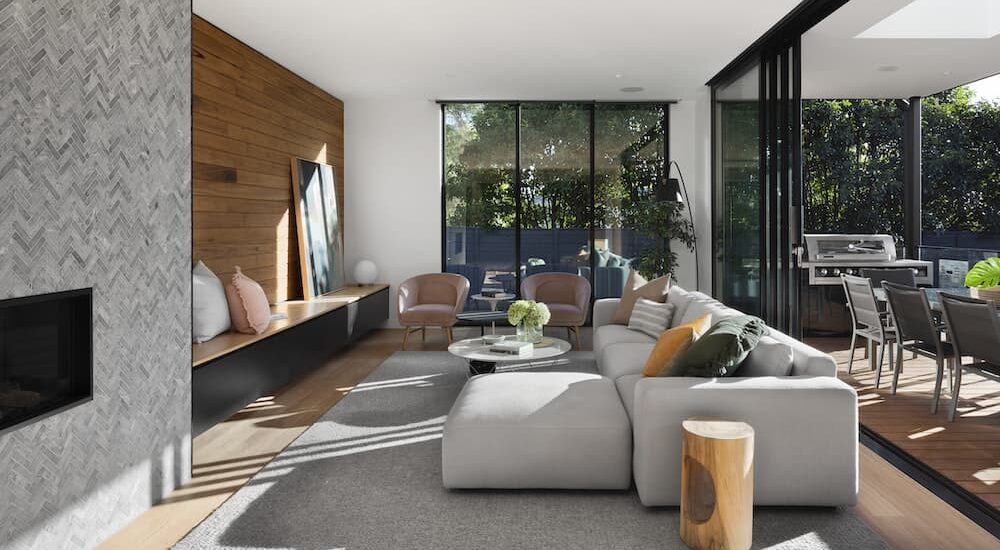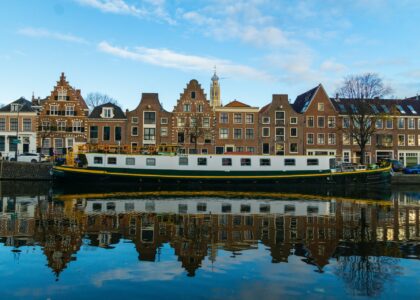When it comes to architecture that seamlessly blends with nature, the Netherlands stands as a shining example. Dutch architects have long been pioneers in creating spaces that celebrate the natural world, and one of the key elements in achieving this harmony is the innovative design of glass doors.
In this article, we’ll explore how Dutch architecture has embraced the Glass House Effect, allowing the beauty of the outdoors to merge with the indoors through groundbreaking door designs.
A Brief History of Dutch Architecture
To understand the modern Dutch approach to architecture and nature, it’s essential to look back at the country’s rich architectural history. Dutch architects have been known for their ability to adapt and innovate in response to the unique challenges presented by their low-lying, water-rich landscape.
Historically, the Dutch have faced the constant threat of flooding and the need to manage water efficiently. This necessity has given rise to an architectural tradition that prioritizes practicality and sustainability.
These principles have evolved over time, resulting in the creation of spaces that coexist harmoniously with the surrounding natural environment.
Modern Dutch Architecture: The Glass House Effect
In the 20th and 21st centuries, Dutch architects have taken the concept of integrating nature and architecture to new heights. They have embraced the Glass House Effect, which refers to the use of expansive glass doors and walls to blur the boundaries between indoor and outdoor spaces.
This design approach not only brings the beauty of nature into homes and buildings but also fosters a sense of connection with the environment.
Innovative Glass Door Designs
The innovative use of glass doors plays a pivotal role in achieving the Glass House Effect in Dutch architecture. Let’s delve into some of the key design elements and techniques that have made these doors so remarkable.
- Frameless Glass Doors
Dutch architects have embraced the concept of frameless glass doors that provide unobstructed views of the outdoors. These doors typically consist of large, seamless panels of glass that can be slid or folded away to create an open-air experience.
The absence of visible frames or mullions enhances the sense of continuity between indoor and outdoor spaces.
- Thermal Efficiency
The Dutch climate can be harsh, with cold winters and cool, damp weather. To ensure year-round comfort, architects prioritize thermal efficiency in glass door design.
High-quality insulating glass and advanced framing materials help maintain a comfortable indoor temperature while still allowing for panoramic views.
- Sustainable Materials
Sustainability is at the core of Dutch architecture. Many glass door designs incorporate sustainable materials, such as recycled glass and responsibly sourced wood for frames.
Additionally, energy-efficient glazing technologies reduce heat loss, making these doors environmentally friendly.
- Smart Technology
Dutch architects often integrate smart technology into glass door systems. This allows homeowners and building occupants to control the opening and closing of the doors, as well as adjust lighting and temperature settings with ease.
These advancements not only enhance convenience but also reduce energy consumption.
- Biophilic Design
Dutch architects are strong proponents of biophilic design, which emphasizes a connection to nature in the built environment.
Glass doors are strategically placed to frame picturesque views of gardens, water features, and other natural elements. This design approach has been shown to improve mental well-being and productivity.
Examples of Dutch Architectural Brilliance
To appreciate the Glass House Effect in Dutch architecture, one need only look at some standout examples:
- Villa Kogelhof
Located in the Zeeland province of the Netherlands, Villa Kogelhof is a stunning example of modern Dutch architecture. Designed by Paul de Ruiter Architects, this sustainable home features an entire façade of frameless glass doors that open up to a beautifully landscaped garden.
The Glass House Effect is on full display, as the residents can enjoy panoramic views of the surrounding countryside while maintaining a comfortable indoor climate.
- The Edge
In Amsterdam, “The Edge” is heralded as one of the most sustainable office buildings in the world. The extensive use of glass throughout the building allows for natural light to flood the interior spaces.
Glass doors and walls create a sense of openness and connection with the outdoors, promoting a healthy and productive work environment.
- Villa Schoorl
This exquisite villa, designed by Studio Prototype in Schoorl, North Holland, takes the Glass House Effect to a new level.
Its innovative glass façade not only provides breathtaking views of the nearby dunes and forest but also generates solar energy through integrated photovoltaic panels, highlighting the Dutch commitment to sustainability.
The Benefits of the Glass House Effect
The integration of glass doors in Dutch architecture brings forth numerous benefits, both aesthetic and functional:
- Natural Light
Glass doors allow copious amounts of natural light to enter the interior spaces, reducing the need for artificial lighting and creating a bright and inviting atmosphere.
- Connection to Nature
Residents and occupants experience a profound connection to the natural environment, which has been shown to enhance well-being and reduce stress.
- Energy Efficiency
Modern glass door systems are designed with energy efficiency in mind, contributing to reduced energy consumption and lower utility bills.
- Versatility:
Glass doors are incredibly versatile and can be tailored to suit various architectural styles and preferences, making them suitable for a wide range of projects.
- Increased Property Value
Homes and buildings with well-designed glass door systems often command higher property values due to their aesthetic appeal and functionality.
Conclusion
Dutch architecture’s embrace of the Glass House Effect through innovative glass door design exemplifies the harmonious coexistence between the built environment and the natural world.
This design approach not only enhances the aesthetics of structures but also promotes sustainability, well-being, and a profound connection to nature.
As Dutch architects, including those at Dominius, continue to push the boundaries of what’s possible. It’s clear that the Glass House Effect will remain a fundamental aspect of their architectural legacy, inspiring architects and homeowners worldwide to blend the beauty of the outdoors with the comfort of indoor spaces.















